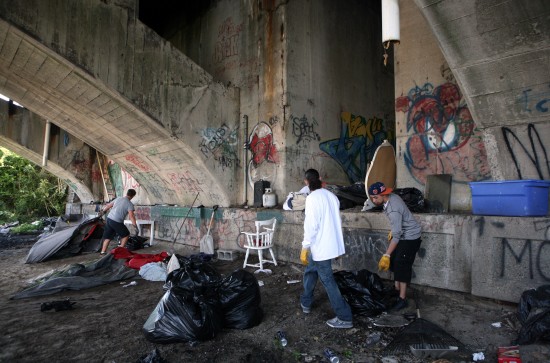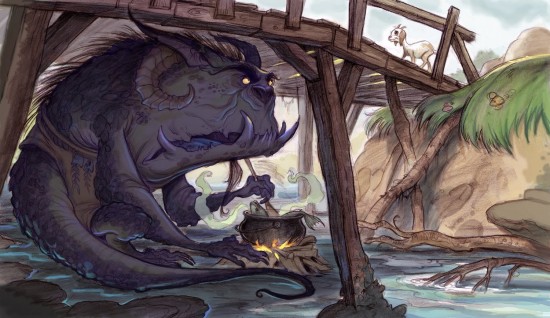Trolls Are A Cautionary Tale About Homeless People
My kid is pretty astute. He has heard scary stories about vampires, zombies, monsters, fairies, and other creatures of folklore. But we have a Norwegian Forest Cat, a large cat that loves water and snow and if famous for hunting and destroying trolls, according to the breed’s legend. But when Cartney tries to use reason and insist that trolls don’t exist, I’m sure to correct him. Trolls do exist. They live under bridges, eat garbage, wear rags, stink, and will molest passersby for money or fun. Just like homeless people do.

Most fairy tales are actually cautionary tales designed to teach children about the bad parts of life. For instance, Hansel and Gretel is designed to warn children to not take candy from strangers, and to not wander off in a dark wood by themselves. The Boy Who Cried Wolf is a precaution about telling the truth or else you can die when no one believes you. Cinderella makes little foster girls maintain hope that things eventually get better. The golden goose story warns against greed.
Likewise, many frightening fairy tale animals are the embodiment of the worst of mankind. The wolf in the big bad wolf stories can represent forces of nature or man’s greed. Giants, ogres and monsters typically represent the barbaric nature of uncivilized tribes and people. Elves represent innocence and cunning, and dwarves represent hard-working greedy miners. So what does the troll really signify? Of course trolls in the literal sense don’t exist, so what were the story tellers trying to convey? I’m convinced they knew about the outcast and homeless, and the troll represents them in the mythos.
Trolls are unloved. Misshapen. They live under bridges. They wear rags and steal food and items for their sustenance. They frighten children and peasants, make crazed demands from interlopers, and are often portrayed as crazy or cunning. And they represent a fall from civilized society.
I’m convinced that the Nordic cultures abhorred those who made themselves hermits or societal outcasts. Usually homeless get where they are because they have exhausted their supply of personal contacts and grace, are addicted to drugs or alcohol or are just plain crazy. And being homeless is certainly nothing new. I think the Nordic cultures were trying to warn children to not become trolls. Keep your friends and family close or you have to live under a bridge.
I might be wrong, but I’ll argue this over a beer anyday.

